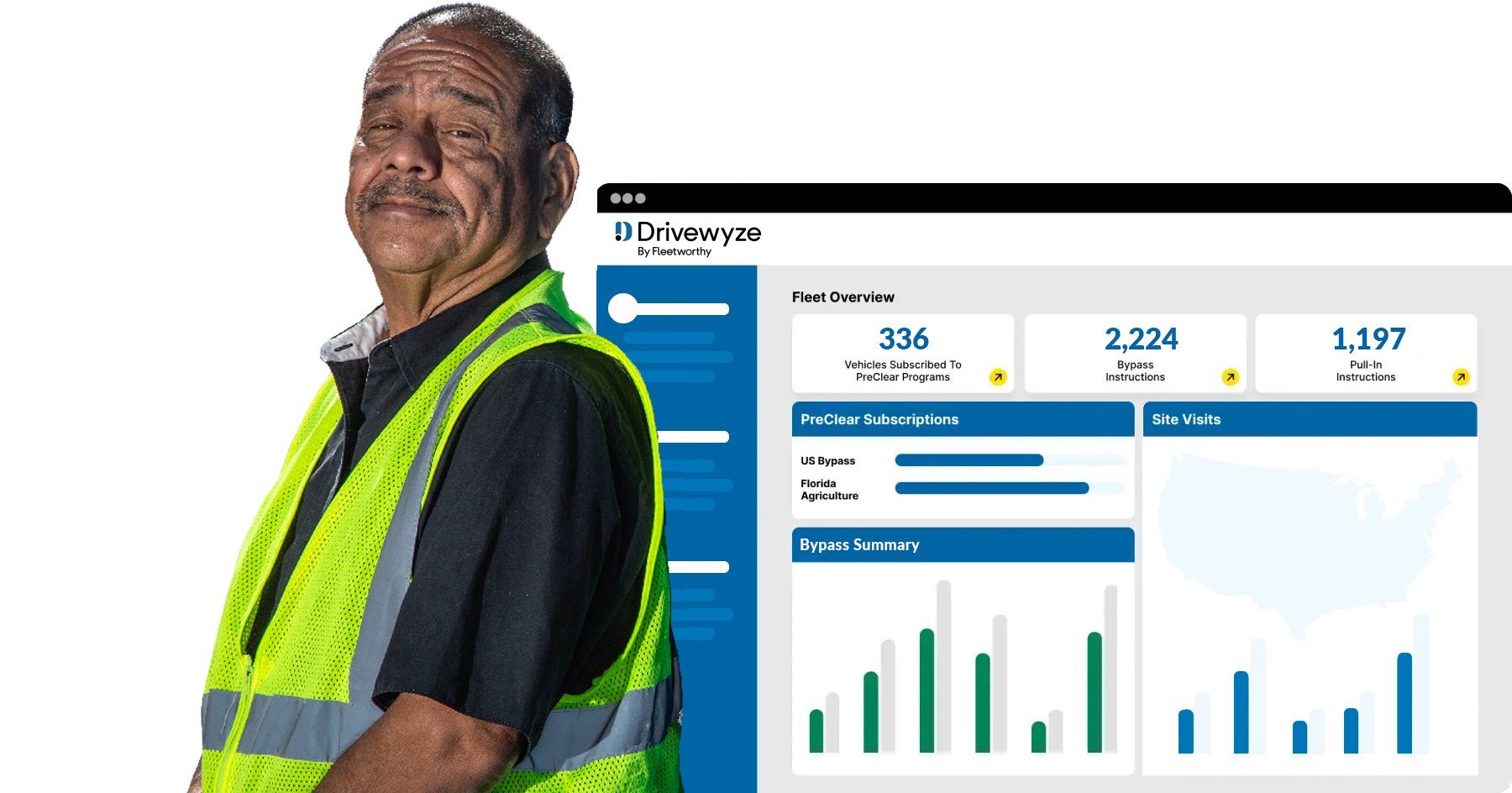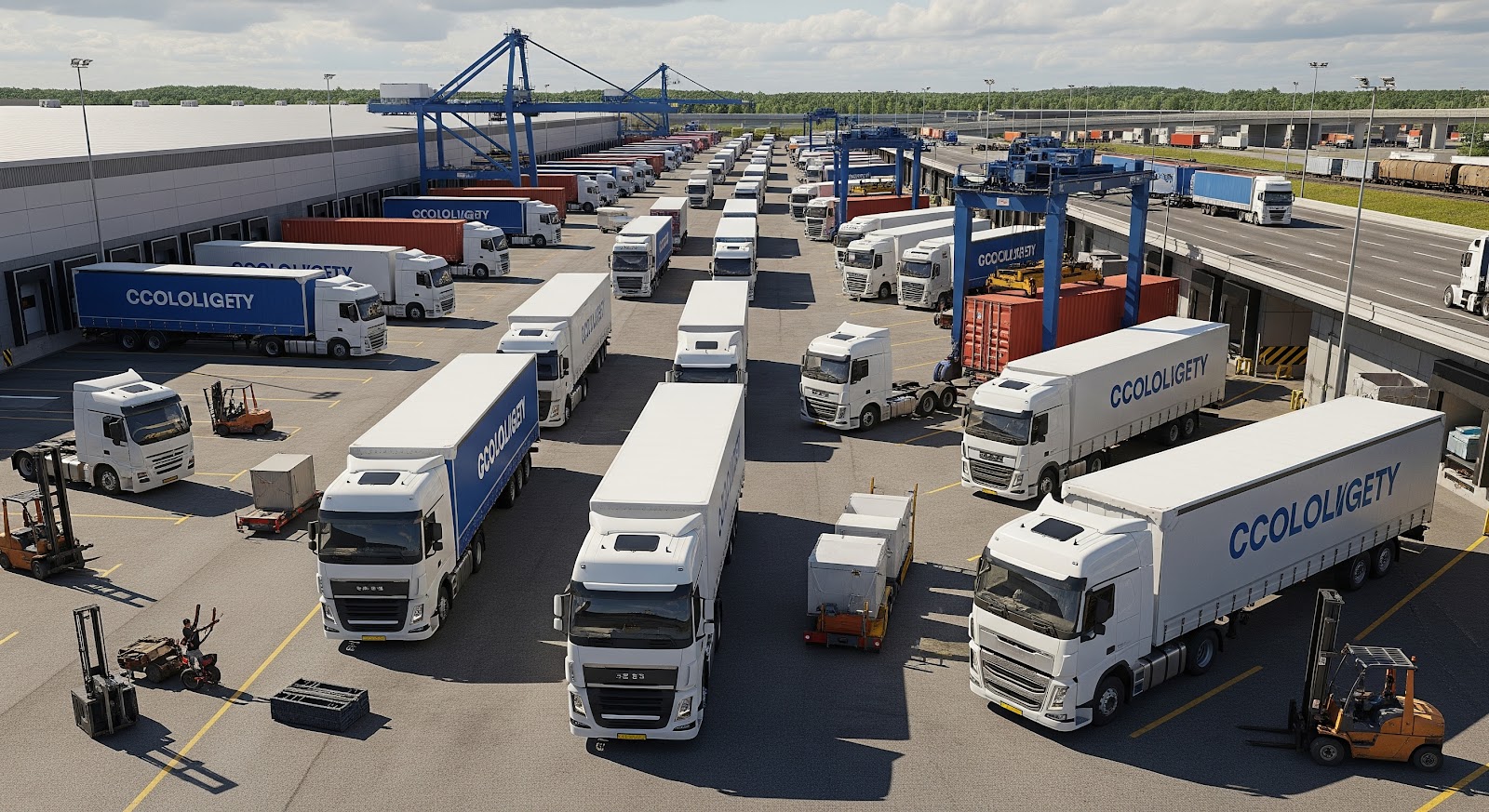Idle time refers to the cumulative hours your vehicles spend with engines running but not moving, whether that’s during delays at weigh stations, waiting at customer sites, or simply sitting in traffic. While a few minutes here and there may seem harmless, idle time adds up quickly across a fleet. The result? Wasted fuel, unnecessary wear on equipment, increased emissions, and lost productivity.
Even more challenging is that idle time often goes unmanaged, largely because it happens passively and isn’t always tracked with the same rigor as miles driven or delivery times. But as fuel prices fluctuate, environmental regulations tighten, and the push for operational efficiency grows stronger, addressing idle time has become a strategic imperative.
This article breaks down what fleet idle time really is, why it should matter to fleet operators, and most importantly, how it can be effectively measured and reduced.
What Is Fleet Idle Time?
Fleet idle time refers to the duration when a commercial vehicle’s engine is running, but the vehicle itself is stationary. In other words, fuel is being consumed and engine hours are accumulating, without any movement or productivity taking place. While short periods of idling are sometimes necessary, excessive or unmanaged idle time represents inefficiency in both cost and performance.
Common Idle Scenarios
Idle time occurs in a variety of operational contexts, many of which are part of a driver’s typical day:
- Waiting at weigh stations or inspection sites: Engines often remain on while drivers wait for clearance or inspection, especially in long queues.
- Sitting in congested traffic: Urban routes or highway slowdowns lead to long periods where trucks are stopped but not turned off.
- Parked with climate control running: Drivers may leave the engine on to power heating or air conditioning during mandated rest breaks or layovers.
- Staging at docks or customer locations: Long wait times during loading/unloading, especially when schedules run behind, can significantly increase idle time.
- Pre-trip routines and early arrivals: Engines might run during paperwork checks, pre-trip inspections, or while waiting for dispatch instructions.
While some of these scenarios are unavoidable, many contribute to unnecessary engine use that can be minimized with better visibility and operational planning.
How Fleet Idle Time Is Measured
Thanks to modern fleet technology, idle time is no longer a “blind spot” in operations. It can be tracked and analyzed through several tools:
- Telematics systems provide GPS-based insights into vehicle status, allowing fleets to track idle time per vehicle, route, or driver.
- Electronic Logging Devices (ELDs) capture engine-on/engine-off data, driving status, and dwell times, helping identify idle periods not associated with Hours of Service driving time.
- Engine diagnostics built into modern trucks track run time and fuel consumption metrics, helping identify when the vehicle is running without movement.
Together, these technologies enable fleet managers to build a detailed picture of idle time trends, compare performance across drivers or terminals, and spot areas for operational improvement.
Why Fleet Idle Time Matters
Fleet idle time is more than just an operational nuisance, it has wide-reaching consequences that touch nearly every part of a fleet’s performance, from fuel efficiency to compliance to driver culture. Understanding the true cost of idle time reveals why it’s essential to manage and reduce it proactively.
A. Operational Impact
1. Increased Fuel Consumption and Waste: Every minute a truck idles, it burns fuel without contributing to mileage or productivity. In fact, a single heavy-duty truck can consume up to a gallon of fuel per hour while idling. Multiply that by hours per driver, per week, across a full fleet, and the scale of waste becomes clear.
2. Higher Vehicle Wear and Maintenance Needs: Idling contributes to engine hours just like driving does, accelerating wear on engine components, exhaust systems, and filters. Excessive idle time shortens maintenance intervals and can lead to more frequent repairs, especially with systems like diesel particulate filters (DPFs), which are sensitive to idle-related soot buildup.
B. Financial Consequences
1. Direct Cost of Fuel and Maintenance: Fuel is one of the top three expenses for any fleet, and unnecessary idling increases this cost with zero return on investment. Beyond fuel, idling adds to total engine hours, accelerating depreciation and increasing total cost of ownership (TCO).
2. Hidden Costs: Productivity Loss and Downtime: Idle time often signals unproductive time, whether that’s waiting at congested inspection points, poor load planning, or inefficient routes. These delays reduce daily capacity, limit revenue per truck, and increase opportunity cost. Worse, idling-induced wear may take vehicles out of service more often, reducing uptime and availability.
C. Environmental and Regulatory Pressure
1. Emissions from Unnecessary Idling: Excessive idling leads to higher carbon emissions and contributes to a fleet’s environmental footprint. In an era where sustainability matters more to regulators, customers, and shippers, high idle rates can reflect poorly on fleet performance and social responsibility.
2. Anti-Idling Regulations: Many states, provinces, and municipalities now enforce strict anti-idling laws, with fines ranging from hundreds to thousands of dollars per violation. These rules often vary by jurisdiction, making compliance complex for fleets operating across multiple regions. A lack of idle time visibility puts fleets at risk for unintentional noncompliance.
D. Driver Behavior and Morale
1. Training Gaps and Routing Inefficiencies: Unmanaged idle time can point to issues in driver training or route design. For example, drivers may leave engines running unnecessarily due to habit or lack of awareness about fuel-saving policies. Alternatively, inefficient dispatching may force drivers into long queues or congested routes where idling becomes unavoidable.
2. Accountability and Fleet Culture: When drivers know idle time is being tracked and addressed, it promotes a culture of ownership and operational mindfulness. Conversely, ignoring idle time sends a message that efficiency isn’t a priority, leading to disengagement and reinforcing bad habits. Coaching drivers with clear, supportive feedback tied to idle metrics can improve both morale and performance.
Taken together, these factors make it clear: idle time isn’t just a nuisance, it’s a direct threat to profitability, safety, sustainability, and culture. Fleets that address it strategically can unlock savings, reduce risk, and improve overall efficiency.
Strategies to Reduce Fleet Idle Time
Reducing fleet idle time starts with visibility, but it doesn’t end there. The most effective strategies combine data, driver engagement, and operational efficiency to create sustainable results. Below are four proven approaches to reducing idle time without compromising driver safety, comfort, or productivity.
A. Data-Driven Monitoring
The first step to managing idle time is knowing when and where it happens.
1. Leverage Telematics and ELD Data: Modern telematics platforms and electronic logging devices (ELDs) provide real-time insights into engine status, vehicle movement, and idle duration. These tools allow fleets to monitor idle events per driver, per route, and per vehicle, helping identify patterns and outliers.
2. Establish Benchmarks and Track Trends: Once idle time data is collected, it’s important to set realistic benchmarks based on operating conditions. Tracking idle time trends over weeks and months enables managers to measure progress, uncover systemic inefficiencies, and set performance goals that are achievable and motivating for drivers.
B. Driver Coaching and Accountability
Idle time reduction isn’t just a data challenge, it’s a people strategy.
1. Proactive Coaching Based on Behavior: Use idle time reports to provide targeted coaching, helping drivers understand when and why they idle. Focus on constructive feedback, recognizing improvement and linking behavior to outcomes like fuel savings or maintenance cost avoidance.
2. In-Cab Alerts and Engine Shutdown Reminders: Real-time in-cab alerts can prompt drivers to turn off the engine during extended stops or layovers. These reminders reduce reliance on memory or habit and help reinforce best practices without needing manual intervention from fleet managers.
C. Route Optimization and Traffic Avoidance
The less time spent stuck or waiting, the less time a vehicle needs to idle.
1. Real-Time Re-Routing: Dynamic route planning tools can help drivers avoid traffic jams, construction zones, or other bottlenecks that lead to excessive idling. Incorporating live data into route selection keeps trucks moving and reduces engine-on, non-moving time.
2. Smarter Planning for Stops: By strategically planning rest breaks, fuel stops, and delivery windows, fleets can minimize the likelihood of drivers waiting in queues or arriving too early. Coordinating timing more precisely reduces unnecessary idling at rest areas, docks, or staging zones.
D. Reducing Wait Times at Inspection and Loading Points
A significant portion of idle time occurs when vehicles are stopped at checkpoints or facilities.
1. Pre-Screening and Digital Inspections: Technologies that enable bypass of weigh stations or streamline inspections through digital processes can drastically reduce idle-related delays. By minimizing dwell time at enforcement sites, fleets can save fuel, reduce stress, and boost on-time performance.
2. Coordination with Shippers and Receivers: Idle time often spikes due to poor communication around loading or unloading schedules. Improving visibility into dock availability or establishing better appointment systems helps reduce bottlenecks at delivery points, and ensures trucks aren’t waiting with engines running.
Reducing idle time doesn’t require dramatic operational shifts. It’s about making smarter, data-informed decisions at every level, leveraging technology, empowering drivers, and fine-tuning everyday processes to keep wheels (and business) moving efficiently.
If you’re ready to reduce unnecessary idle time, lower operating costs, and drive meaningful improvements across your fleet, the path forward starts with smarter insights and proactive action.
Modern fleet operations demand more than just awareness, they require the right tools to uncover idle trends, empower drivers, and eliminate inefficiencies before they become expensive problems. Whether you’re looking to cut fuel waste, reduce wear and tear, or improve driver accountability, idle time is a controllable variable, and an opportunity for immediate impact.
The right technology can help you:
- Monitor and analyze idle time across vehicles and routes
- Deliver real-time, in-cab feedback to reduce wasteful engine use
- Identify high-impact opportunities to streamline your workflows
- Build a culture of accountability and operational excellence
Explore how our solutions can help you gain the visibility, coaching capabilities, and operational agility you need to cut idle time and improve fleet-wide performance.
Let’s move your fleet forward, smarter, faster, and more efficiently.

Ready to Get Started?
Learn how North America’s leading carriers use Drivewyze to save money and improve safety.





